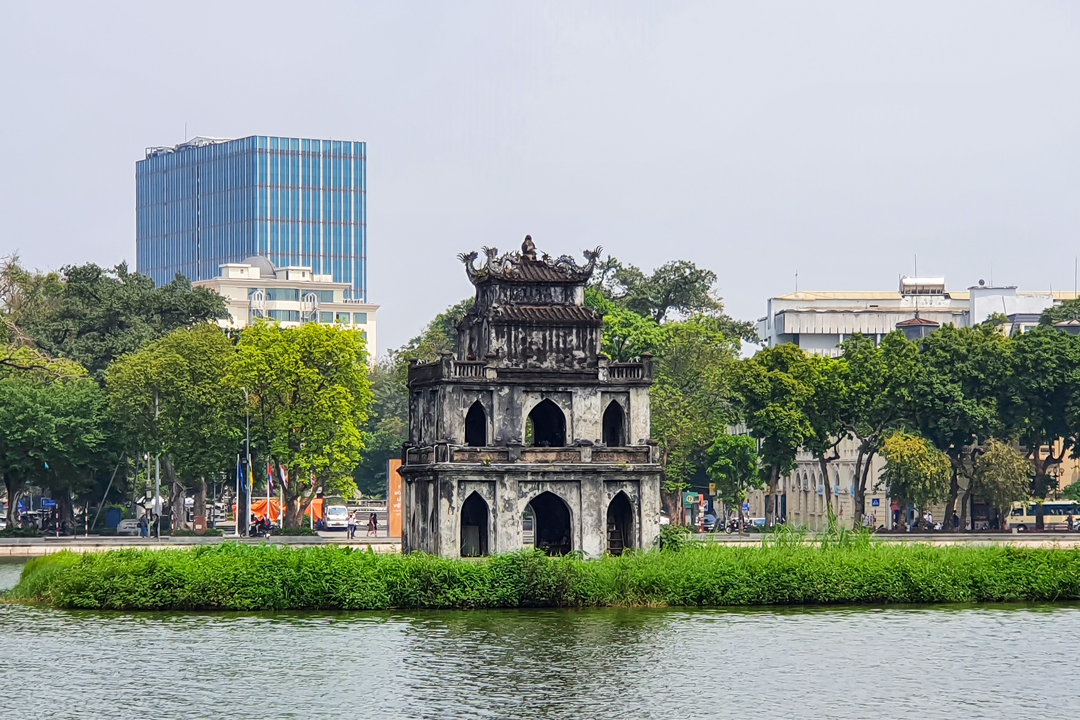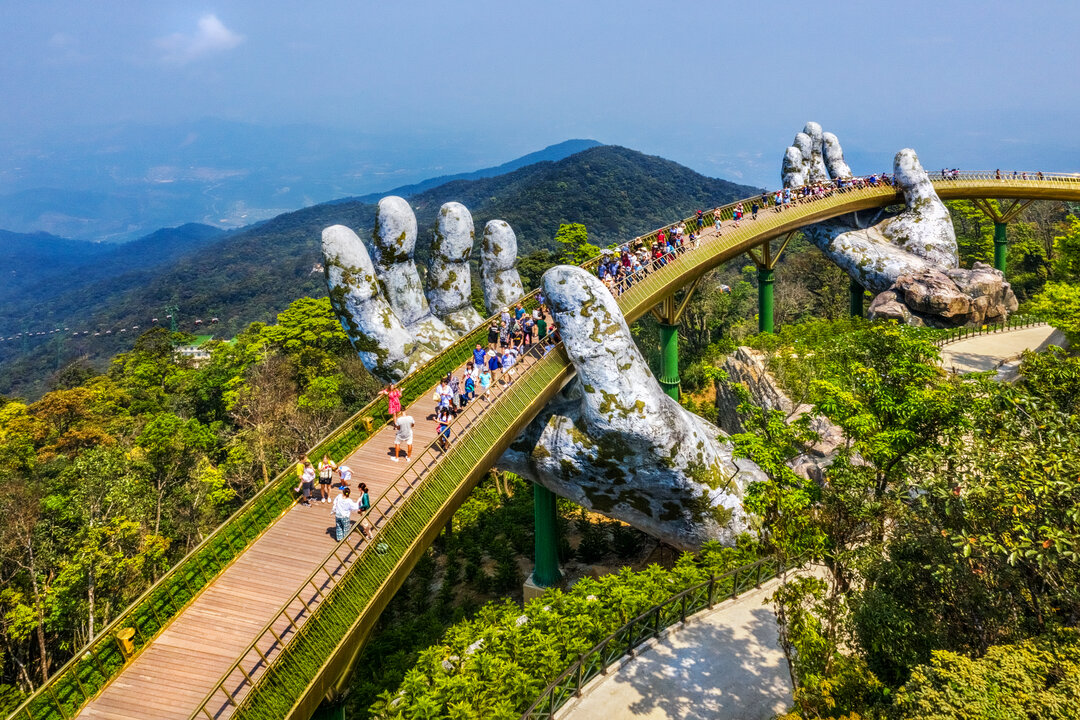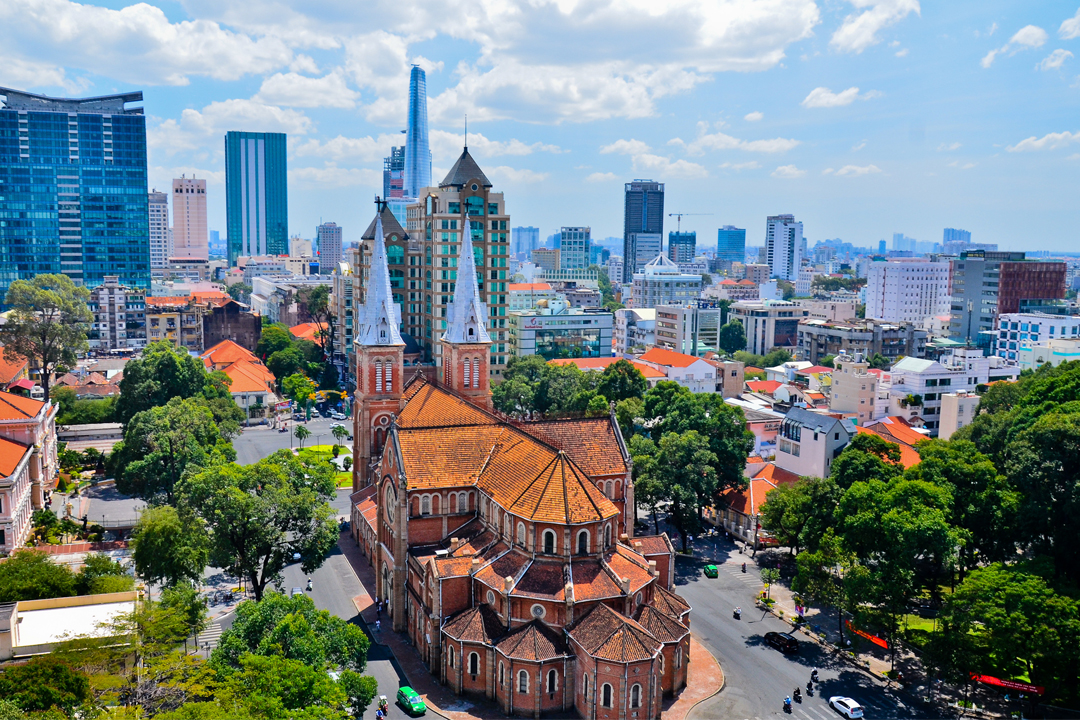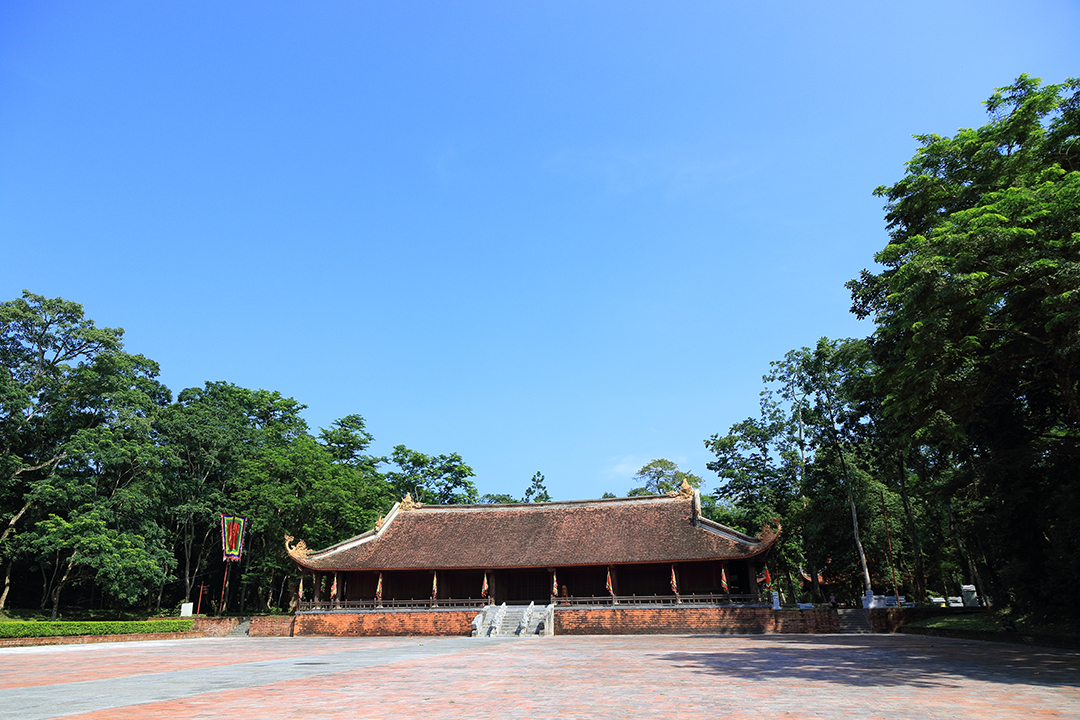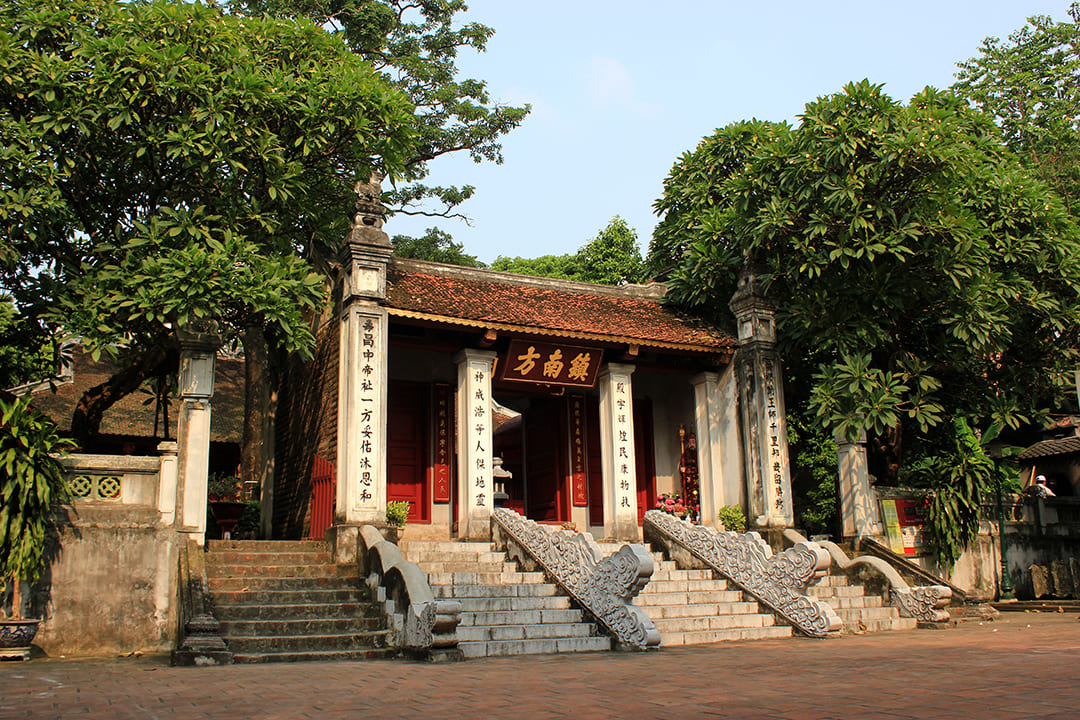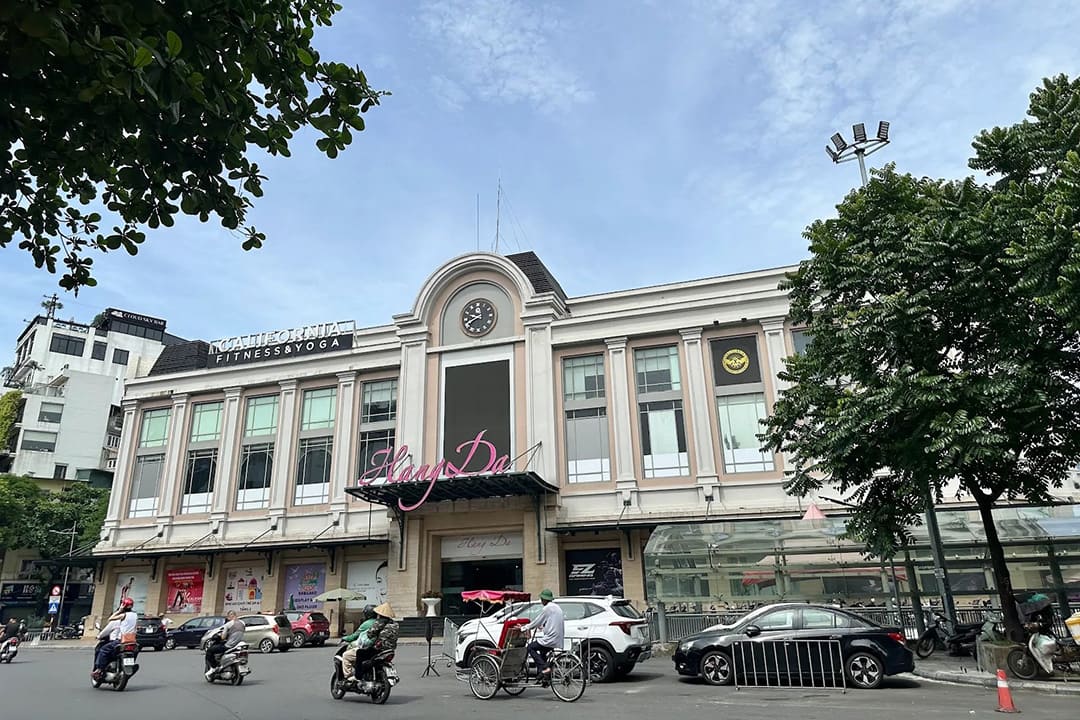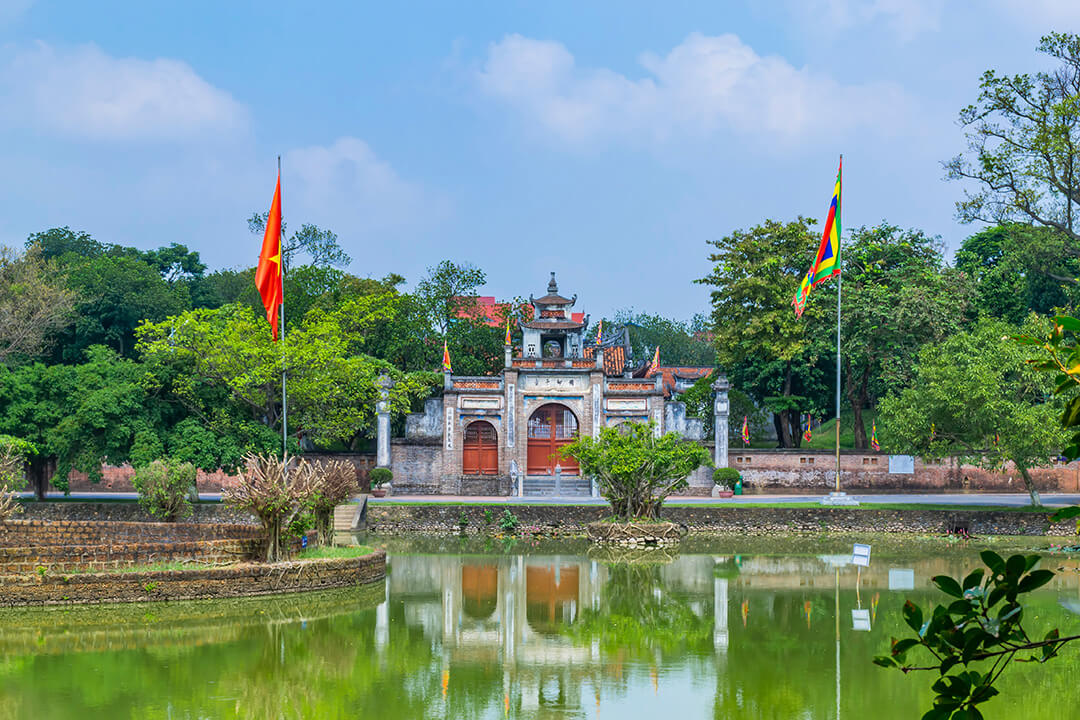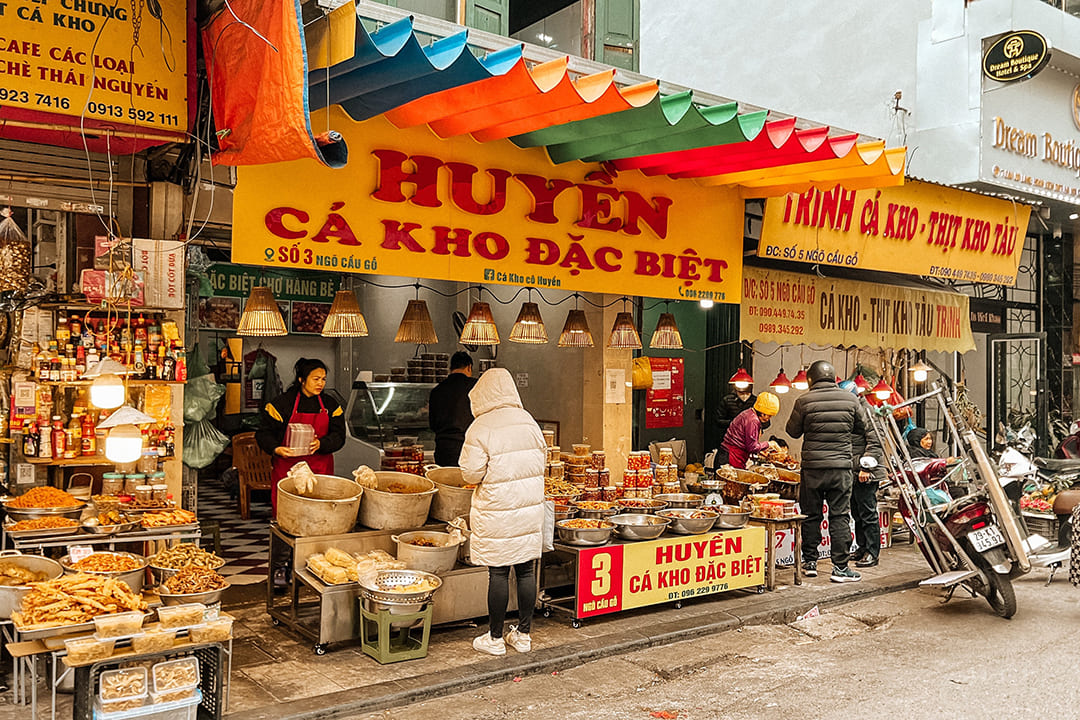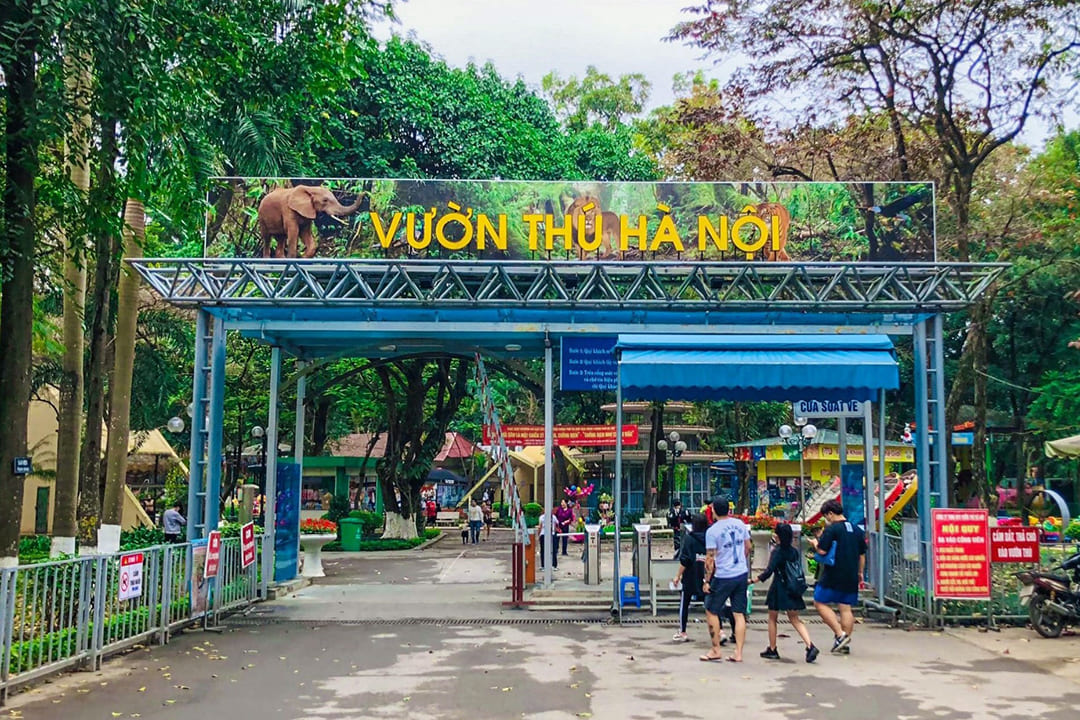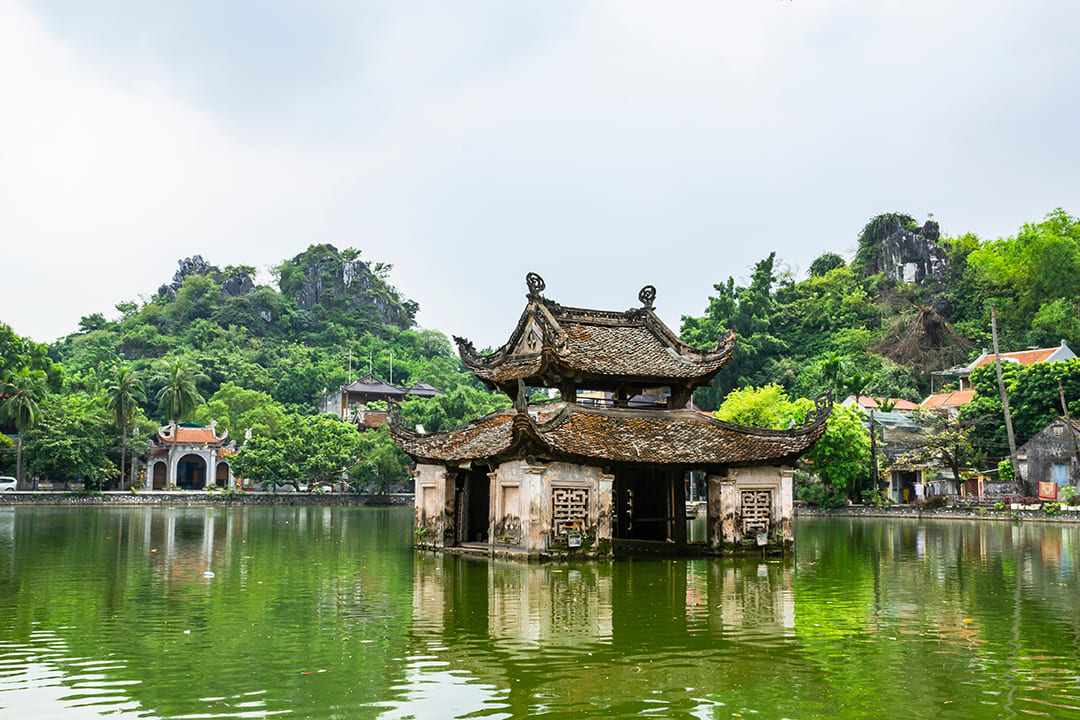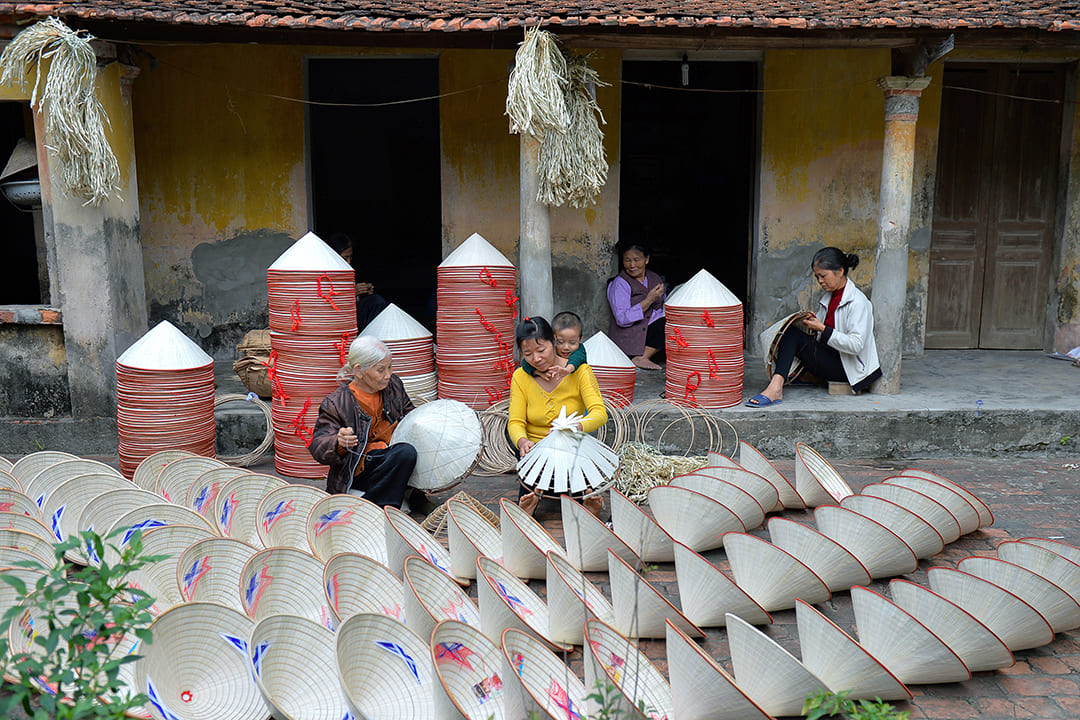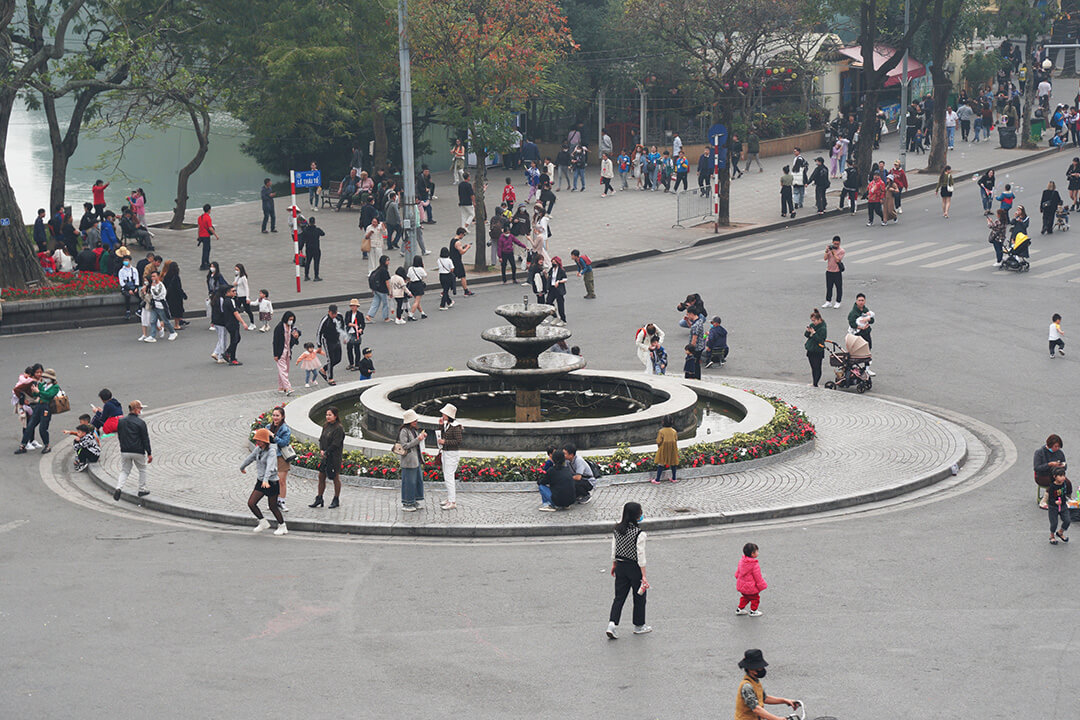Oct - 06 - 2025
Voi Phuc Temple is one of the “Four Sacred Temples of Thang Long,” built to honor Saint Linh Lang, the western guardian of the ancient capital. With nearly a thousand years of history, the temple embodies deep spiritual significance, timeless architecture, and legends closely tied to Hanoi’s past. The temple stands as both a sacred worship site and a cultural landmark attracting history lovers and travelers alike. This GTrip guide will walk you through its location, how to get there, and the must-see highlights to make your visit truly meaningful.
Overview of Voi Phuc Temple in Hanoi
- Address: 362 Kim Ma Street, Ngoc Ha Ward (formerly Ngoc Khanh Ward, Ba Dinh District), Hanoi
- Opening hours: 8:00 AM - 5:00 PM, daily
- Entrance fee: Free
Finding this historical treasure is straightforward, as it is conveniently located next to Thu Le Park in the central former Ba Dinh district. Its accessibility makes it an easy addition to any Hanoi itinerary.
- By bus: This is one of the most economical ways to get to Voi Phuc Temple. Several bus routes stop nearby, including buses 9, 25, 28, 32, 34, 38, and 49. The bus stop is just a short walk from the temple entrance.
- By ride-hailing app: Using a ride-hailing app like Grab is a fast and convenient option. You can book either a car or a motorbike taxi for a direct trip to the temple gate. Fares are affordable, typically costing between 30,000 and 50,000 VND for a trip from the Hanoi Old Quarter.
- By motorbike: For those comfortable navigating Hanoi's streets, finding a motorbike rental in Hanoi offers great flexibility. You can park your bike at the designated area near the temple for a small fee, usually around 5,000 VND.
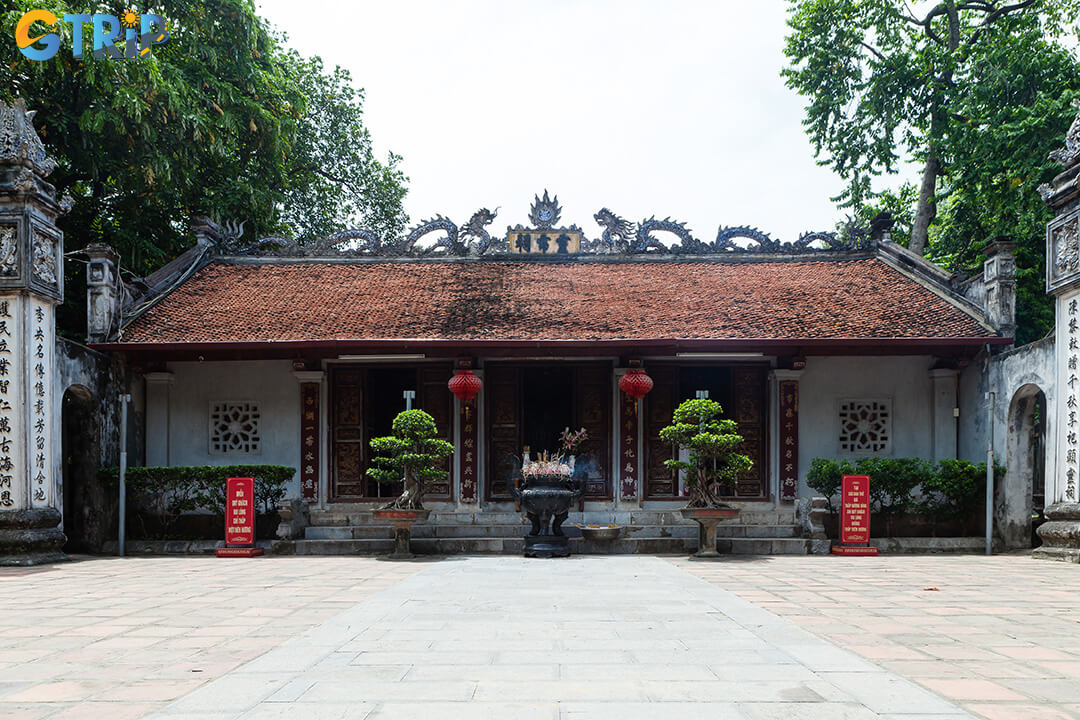
Voi Phuc Temple is located beside Thu Le Park with multiple transport options, including bus, Grab, or motorbike
The history of Voi Phuc Temple in Thu Le through the ages
The story of Voi Phuc Temple is rooted in Hanoi’s history, from its Ly Dynasty origins to its lasting role as a sacred guardian of the Thang Long Citadel’s western flank.
What are the Four Sacred Temples of Thang Long?
Voi Phuc Temple is a key part of the Thang Long Tu Tran, or the Four Sacred Temples of Thang Long. This is a set of four ancient temples strategically built to guard the four cardinal directions of the Thang Long Imperial Citadel, the very heart of the ancient capital. Each temple worships a different deity tasked with protecting the city from malevolent spirits and bringing peace and prosperity to the capital. The four temples are:
- Voi Phuc Temple (West): Worshipping Prince Linh Lang
- Bach Ma Temple (East): Worshipping the deity Long Do
- Quan Thanh Temple (North): Worshipping the deity Huyen Thien Tran Vu
- Kim Lien Temple (South): Worshipping Prince Cao Son Dai Vuong
Period 1: Established during the Ly Dynasty (11th Century)
The temple's origins date back nearly a millennium. It was constructed in 1065 during the reign of King Ly Thanh Tong on a high mound in the Thu Le area. Voi Phuc Temple was once part of a royal garden and military outpost of the ancient Thang Long capital. The temple was built to worship Prince Linh Lang, a heroic figure from the Ly Dynasty. Legend holds that the prince was a son of the Dragon Lord (Long Quan), sent to assist the nation. He is credited with leading the Vietnamese army to a great victory against Song invaders, using his strategic genius and command of war elephants. Upon his heroic death in 1076, the king posthumously honored him with the title Linh Lang Dai Vuong (Great King Linh Lang) and ordered the construction of the temple in his memory. The name Voi Phuc Temple, meaning the Temple of Kneeling Elephants, derives from the two impressive stone elephants that kneel reverently at the main gate.
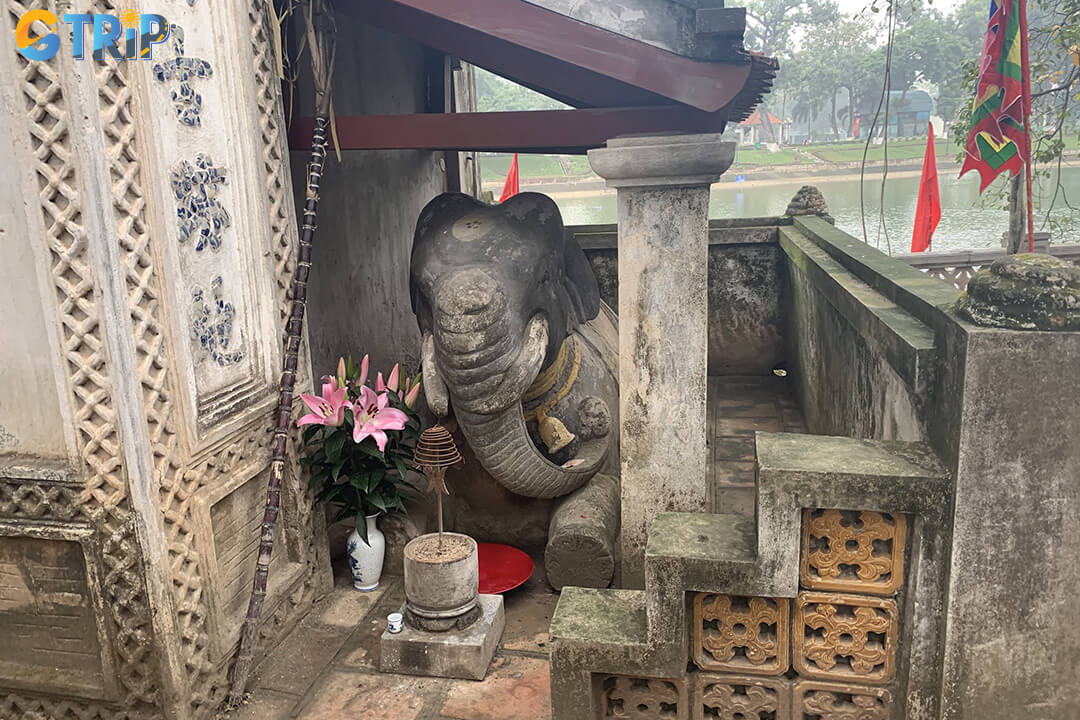
Voi Phuc Temple, built in 1065 to honor Prince Linh Lang, stands as a millennium-old tribute to the Ly Dynasty hero and his legendary war elephants
Period 2: Symbol of spiritual power in the Tran and Le Dynasties
Throughout the Tran Dynasty (13th - 14th centuries) and later the Le Dynasty (15th - 18th centuries), Voi Phuc Temple's sacred reputation grew immensely. It became part of the "Thang Long Tu Tran", the Four Guardian Temples protecting the four cardinal directions of the capital, with Voi Phuc guarding the western gate. The spirit of Saint Linh Lang was widely believed to continue watching over the nation, offering divine aid in times of crisis. His spirit was invoked to protect the capital during fierce resistance against Mongol invasions. Later, during the Le Dynasty’s efforts to restore national stability, kings, generals, and commoners alike visited the temple to pray for support and victory.
Period 3: Architectural features in later eras
Founded in the Ly Dynasty, the temple’s current form reflects later renovations, especially from the Nguyen Dynasty in the 19th - 20th centuries. A notable feature is the imposing four-pillar gate marking the temple entrance, a characteristic element of Vietnamese temples and communal houses from that period. The courtyard features two "Ha Ma" steles, commanding respect for the sacred deity within. Voi Phuc Temple has been carefully preserved and recognized as a national historical and cultural relic since 1962. The temple serves as a key site for cultural heritage, religious practices, and historical education in modern Hanoi.
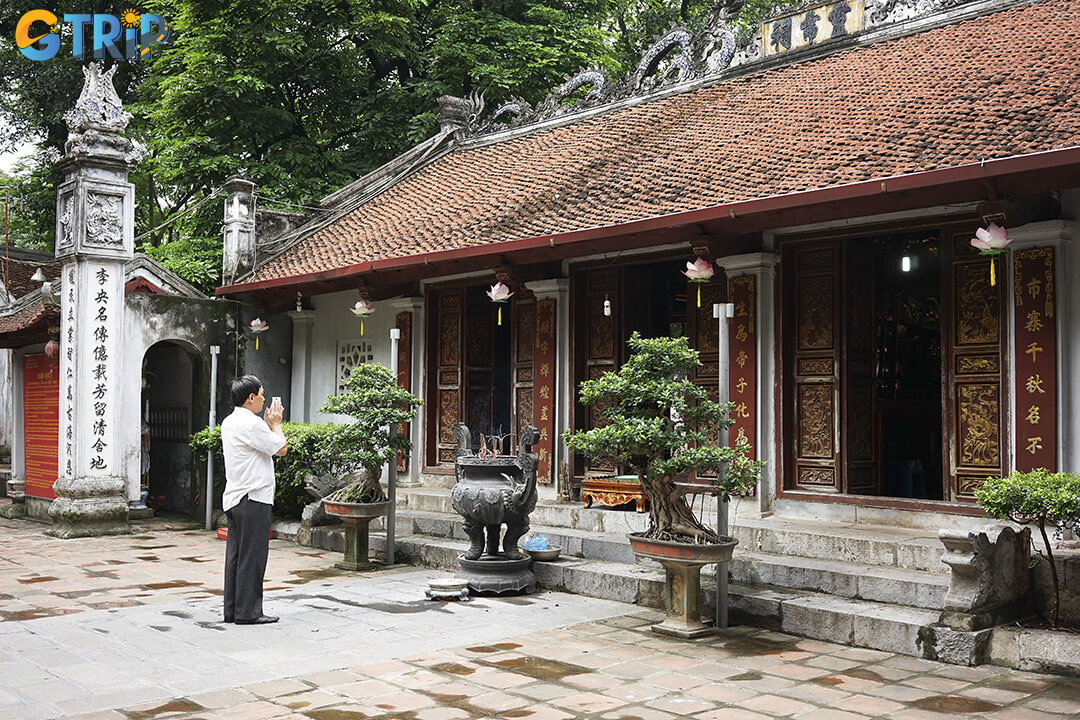
Voi Phuc Temple is a preserved national relic known for its four-pillar gate and cultural significance
Architecture and artefacts of Voi Phuc Temple
The architecture of Voi Phuc Temple is a remarkable example of traditional Vietnamese design, blending spiritual symbolism with masterful craftsmanship. Despite numerous restorations, it retains an ancient and solemn atmosphere, with each structure and artefact telling a piece of its long history.
Overall layout and exterior space
The temple is built following the traditional Cong-shaped layout, an architectural style resembling the Chinese character "Cong" (工). This design connects the Front Ceremonial Hall (Tien Te) with the rear Sanctuary (Hau Cung) via a smaller connecting corridor. The entrance to the main worship area is marked by three stone stairways. The exterior space is rich with symbolic details, such as a large square well in the courtyard, which represents the gathering of blessings and prosperity. The grounds showcase intricate stone carvings, with dragon-cloud roof sculptures and tiger-face bas-reliefs meant to ward off evil spirits.
Architecture of the main structures
The temple complex consists of three main halls. The Front Ceremonial Hall is a five-compartment structure with a traditional roof covered in mui hai tiles and supported by a frame built in the chong ruong style. This hall is used for major ceremonies and offerings. Beyond it lies the Central Hall, and finally, the Sanctuary, the most sacred part of the temple. The Sanctuary houses the revered bronze statue of Saint Linh Lang, depicted sitting on a throne in a posture of serene authority. Also within the Sanctuary is the legendary large stone that Prince Linh Lang is said to have rested upon, now covered with a red cloth and treated as a sacred relic.
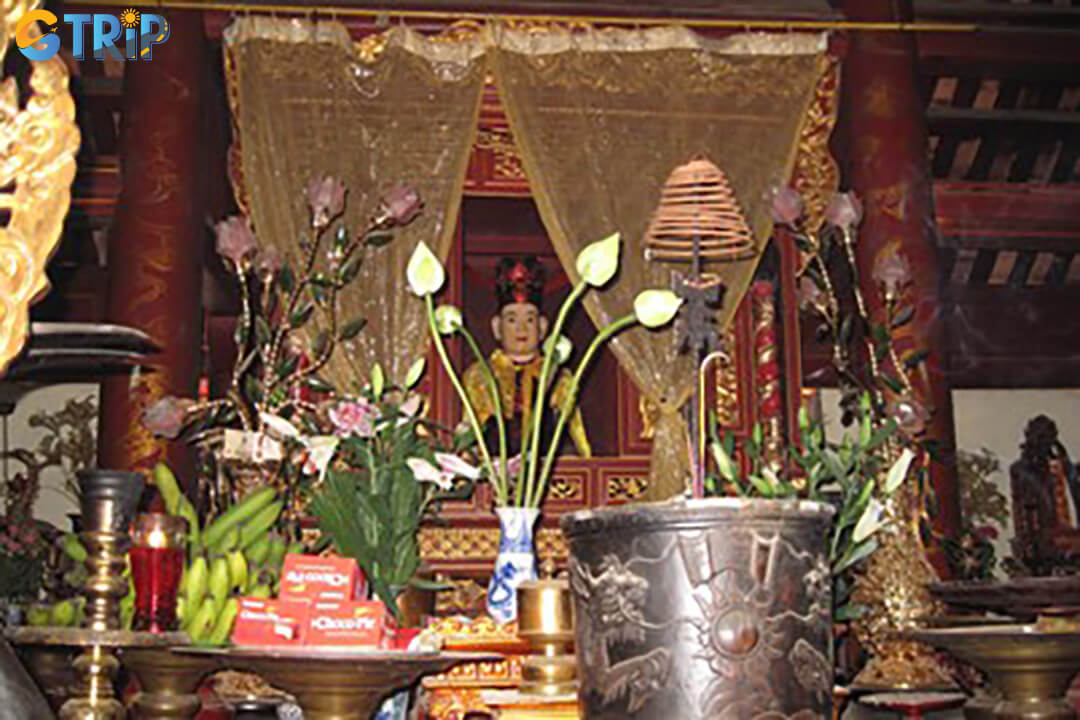
Voi Phuc Temple complex features three main halls, culminating in the Sanctuary, which enshrines Saint Linh Lang’s bronze statue and a revered sacred stone
Sacred artefacts and furnishings
The temple is filled with valuable ceremonial items that are both artistically significant and historically priceless. The temple houses many valuable artefacts, including intricately carved lacquered horizontal boards, gilded parallel verses that praise the deity's merits, and the “Eight Precious Offerings”. One of the most important artefacts is a large temple bell, cast in 1796 during the Tay Son Dynasty. Its inscription affirms the temple's identity as "Tay Tran Thuong Dang", confirming its official role as one of the Four Sacred Temples.
Restoration and renovation history
Like many historical sites, Voi Phuc Temple has weathered periods of damage and renewal. It was heavily damaged by French colonial forces in 1947 but was subsequently restored by the local community. More recently, the temple underwent major renovations in 2000 and again in 2009 to prepare for the 1000th anniversary of Thang Long. These efforts have helped preserve its ancient architecture for future generations. In recognition of its profound historical and cultural value, Voi Phuc Temple was officially designated as a National Cultural and Historical Site on April 28, 1962.
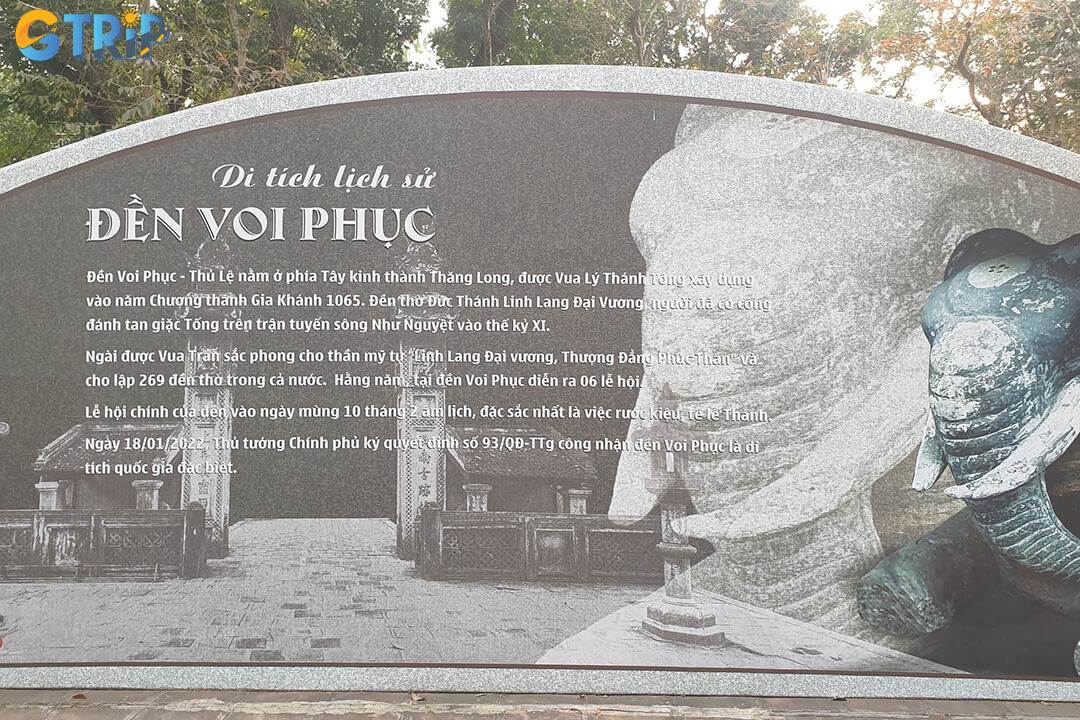
Voi Phuc Temple, restored after war damage and later renovated for Hanoi’s 1000th anniversary, has been preserved as a National Cultural and Historical Site since 1962
Things to do in Voi Phuc Temple
A visit to Voi Phuc Temple offers a deeply enriching experience, making it one of the most essential cultural things to do in Hanoi. It allows you to appreciate ancient architecture, witness living traditions, and connect with the city's spiritual heritage.
1. Exploring the ancient architecture of Voi Phuc Temple
Take your time to wander through the temple grounds and appreciate the masterful craftsmanship. Pay attention to the traditional "Cong" layout and the sweeping, tiled roofs decorated with symbolic carvings like dragons and clouds. Look for the ancient details that tell a story.
Notice the powerful tiger-face reliefs on the exterior walls and the ancient "ha ma" steles that commanded respect from all who passed. The blend of solemn stone, rich lacquered wood, and intricate carvings creates a deeply atmospheric and photogenic environment.
2. Participate in Voi Phuc Temple Festival
If your visit coincides with the 9th to the 11th day of the second lunar month, you can witness the vibrant Voi Phuc Temple Festival. This annual event is held to honor Saint Linh Lang and is one of the most significant cultural festivals in Hanoi, attracting thousands of locals and pilgrims.
The festival features many traditional ceremonies, such as a grand palanquin procession, incense offerings, and lively cultural performances. It includes folk games and Cheo singing. Participating in or observing the festival offers a profound insight into Vietnamese spiritual life and community traditions.
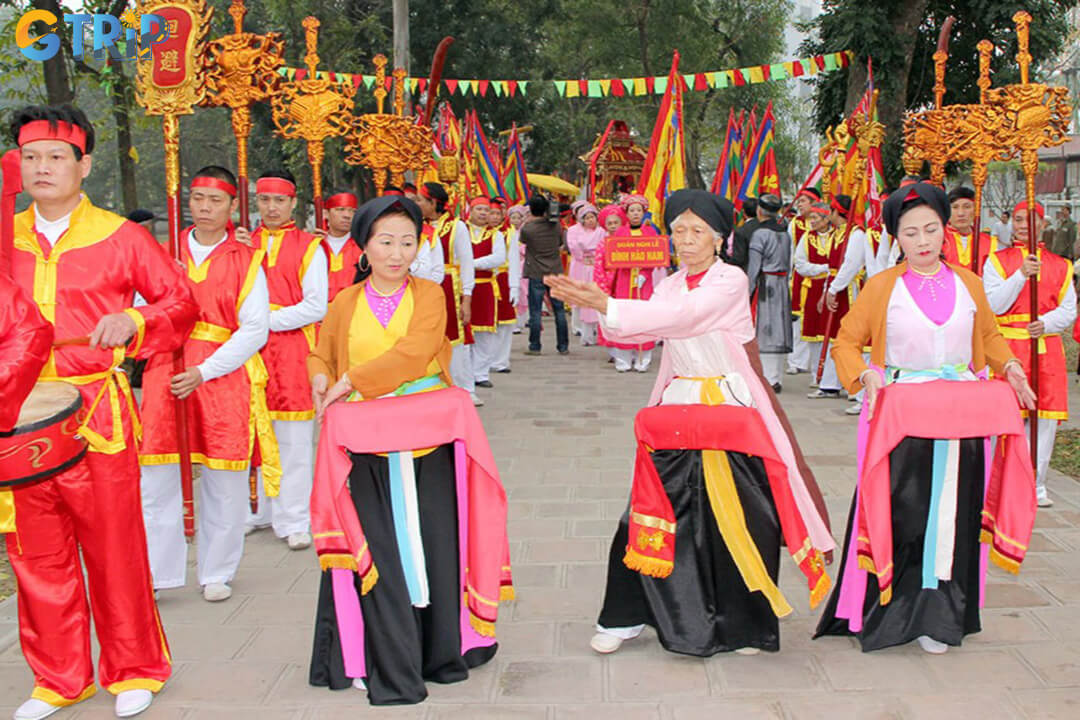
Voi Phuc Temple Festival, held annually from the 9th to 11th of the second lunar month, with vibrant processions, rituals, and cultural performances
3. Admire the exquisitely carved statues and artefacts
Step inside the main halls to admire the temple's sacred treasures. The highlight is the bronze statue of Saint Linh Lang in the main sanctuary, a masterpiece of casting and artistry. Let your eyes wander over the intricate details of the royal seat he sits upon.
Notice the gilded and lacquered horizontal boards and parallel verses hanging from the columns. These works are beautiful and contain poetic script praising the virtues and deeds of the guardian deity, offering a glimpse into Vietnam's literary and philosophical traditions.
4. Take lots of beautiful photos
Voi Phuc Temple is a photographer's delight, offering a wealth of beautiful compositions. Frame a shot of the two iconic stone elephants kneeling at the entrance gate, with the ancient banyan trees providing a timeless backdrop. Capture the ornate details of the dragon carvings on the roof ridges.
The temple's courtyards, with their ancient wells and stone carvings, provide a serene setting. However, remember that this is an active place of worship. Be mindful and respectful, especially when taking photos inside the main prayer halls, and always avoid using flash.

Voi Phuc Temple offers photographers timeless scenes, from kneeling stone elephants to intricate carvings and serene courtyards, all within a sacred setting
Tips when visiting Voi Phuc Temple
To ensure a smooth and respectful visit to this sacred site, please keep the following tips in mind. Following these simple guidelines will help you have a more enjoyable and meaningful experience.
- Opening: The temple is generally open daily. On the 1st and 15th of each lunar month, the temple may have extended hours to accommodate more worshippers.
- Dress code: This is a place of worship, so you must dress modestly. Wear clothes that cover your shoulders and knees. Avoid shorts, skirts, and tank tops. If you are not dressed appropriately, you may be denied entry.
- Behavior: Maintain a quiet and respectful demeanor inside the temple grounds. Do not run, shout, or talk loudly. Walk slowly and take your time to absorb the peaceful atmosphere.
- Offerings: If you wish to make an offering, you can buy incense, flowers, and fruit from vendors near the temple entrance. Place them on the designated altars. Making a small donation in the contribution boxes is also appreciated.
- Photography: You can take photos in the courtyard and of the exterior architecture. When inside the main halls, be discreet and avoid using flash. Always show respect for the worshippers and the sacred objects.
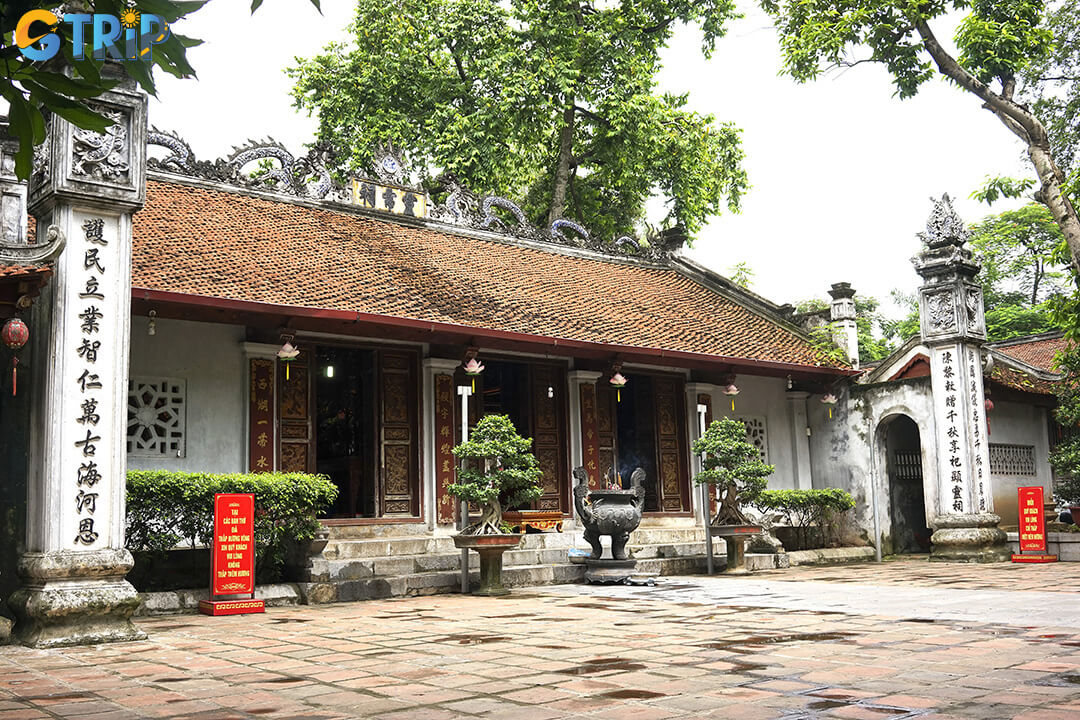
Voi Phuc Temple welcomes visitors daily, but modest dress, respectful behavior, and mindful photography are essential for a smooth and meaningful visit
As one of Hanoi's four sacred guardians, Voi Phuc Temple is a living testament to nearly a thousand years of faith and legend. Its history, tied to the heroic Prince Linh Lang, is etched into its ancient architecture, sacred relics, and vibrant annual festival. Experiencing the serene power of Hanoi's Western Guardian offers a profound link to the capital's timeless heritage, an unmissable cultural highlight that GTrip proudly includes in our thoughtfully designed Vietnam tour packages.

